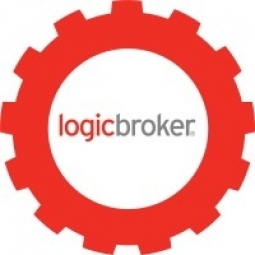Technology Category
- Application Infrastructure & Middleware - Data Exchange & Integration
- Application Infrastructure & Middleware - Middleware, SDKs & Libraries
Applicable Industries
- Consumer Goods
- Retail
Use Cases
- Retail Store Automation
- Theft Detection
Services
- System Integration
About The Customer
Nanit is a company that launched in 2016 with a mission to make life more manageable for new parents by connecting them to their child's development and well-being. Since its launch, Nanit has become a top choice for most baby registries and has been a featured product on marketplaces across the country. The company experienced rapid growth, which led to the need for a scalable and efficient eCommerce solution. Nanit's goal is to become the number one product on every baby registry, and to achieve this, they needed a system that could handle the increasing volume of data and retailer integrations.
The Challenge
Nanit, a company that revolutionized the parenting world with its innovative products, faced a significant challenge as its growth began to skyrocket. The company's existing eCommerce solution provider was unable to keep up with the rapidly evolving operations. As a result, Nanit initiated a massive internal changeover to NetSuite. However, as the integrations increased and processes became more complex, Nanit realized the need for a more efficient solution. The company decided to switch to Logicbroker while the NetSuite integration was still underway. The challenge was to develop a 'hybrid' eCommerce solution that would primarily operate outside any one system while onboarding was still taking place. The goal was to ensure a simple, one-connection-point system that could scale with Nanit's continuous growth.
The Solution
As the NetSuite integration was taking place, Nanit's manufacturing department took charge of finding a workable eCommerce solution. After extensive discussions with various companies, Logicbroker emerged as the ideal solution that met all of Nanit's requirements. Initially, many at Nanit were manually integrating retailers while using Quickbooks for all internal accounting processes. However, as the company grew, it became impossible to manually enter the data coming through their system. Nanit adopted NetSuite and Logicbroker to fully automate processes that previously took hours to complete. With fully automated reporting, error tracking, retailer onboarding, and more, Nanit transformed into a well-oiled machine, ready to scale with its growth.
Operational Impact
Quantitative Benefit

Case Study missing?
Start adding your own!
Register with your work email and create a new case study profile for your business.
Related Case Studies.
.png)
Case Study
Improving Vending Machine Profitability with the Internet of Things (IoT)
The vending industry is undergoing a sea change, taking advantage of new technologies to go beyond just delivering snacks to creating a new retail location. Intelligent vending machines can be found in many public locations as well as company facilities, selling different types of goods and services, including even computer accessories, gold bars, tickets, and office supplies. With increasing sophistication, they may also provide time- and location-based data pertaining to sales, inventory, and customer preferences. But at the end of the day, vending machine operators know greater profitability is driven by higher sales and lower operating costs.

Case Study
Improving Production Line Efficiency with Ethernet Micro RTU Controller
Moxa was asked to provide a connectivity solution for one of the world's leading cosmetics companies. This multinational corporation, with retail presence in 130 countries, 23 global braches, and over 66,000 employees, sought to improve the efficiency of their production process by migrating from manual monitoring to an automatic productivity monitoring system. The production line was being monitored by ABB Real-TPI, a factory information system that offers data collection and analysis to improve plant efficiency. Due to software limitations, the customer needed an OPC server and a corresponding I/O solution to collect data from additional sensor devices for the Real-TPI system. The goal is to enable the factory information system to more thoroughly collect data from every corner of the production line. This will improve its ability to measure Overall Equipment Effectiveness (OEE) and translate into increased production efficiencies. System Requirements • Instant status updates while still consuming minimal bandwidth to relieve strain on limited factory networks • Interoperable with ABB Real-TPI • Small form factor appropriate for deployment where space is scarce • Remote software management and configuration to simplify operations

Case Study
Digital Retail Security Solutions
Sennco wanted to help its retail customers increase sales and profits by developing an innovative alarm system as opposed to conventional connected alarms that are permanently tethered to display products. These traditional security systems were cumbersome and intrusive to the customer shopping experience. Additionally, they provided no useful data or analytics.

Case Study
How Sirqul’s IoT Platform is Crafting Carrefour’s New In-Store Experiences
Carrefour Taiwan’s goal is to be completely digital by end of 2018. Out-dated manual methods for analysis and assumptions limited Carrefour’s ability to change the customer experience and were void of real-time decision-making capabilities. Rather than relying solely on sales data, assumptions, and disparate systems, Carrefour Taiwan’s CEO led an initiative to find a connected IoT solution that could give the team the ability to make real-time changes and more informed decisions. Prior to implementing, Carrefour struggled to address their conversion rates and did not have the proper insights into the customer decision-making process nor how to make an immediate impact without losing customer confidence.









